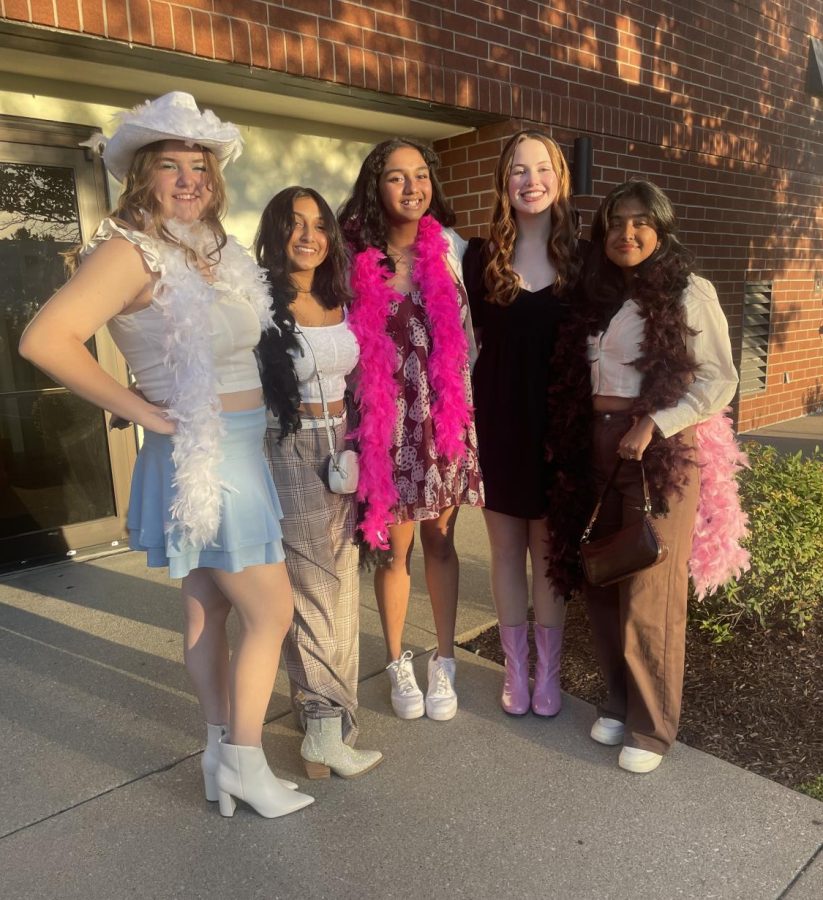Once upon a time, the most expensive and important part of attending a concert was the tickets. As long as a person could afford to be at the event, they were golden, in need of little else. However, this simplicity has shifted in the modern era of live music, with a new component being introduced: the concert outfit.
For many music lovers now, the most important and exciting part of going to a show is choosing what to wear. The clothes must be precisely selected to match the exact vibe of the music, the artist and the venue. Comfort and practicality go out the window in exchange for glamor and aesthetic.
To fans, wearing the right outfit isn’t just about looking good. Clothes appropriate to a specific artist serve as a testament to their own level of fandom, proving to others how committed they are.
Sophomore Sophia Pomykala commented on her rationale behind dressing up for concerts. “For myself personally, it’s a way of showing I’m excited to be there,” she explained, adding that some outfits serve as proof of one’s devotion.
The best case studies for the shifting concert culture are Harry Styles’ “Love on Tour” and Taylor Swift’s “Eras Tour.” Both events were highly anticipated, giving fans the opportunity to design their dream outfits. Styles and Swift also have a notably similar audience, primarily made up of young women.
At big events like these, there are recurring themes; Love on Tour outfits commonly have sequins, feather boas and fruit motifs, while the Eras Tour looks are designed based on Swift’s 10 distinct album aesthetics, generally including glitter and cowboy boots.
Another common theme of the current concert culture is outfit recreations. Previous looks by the artist are redone with fans’ wardrobes. These range from red carpet designs and album covers to obscure references known only to superfans.
The more people that dress up for concerts, the more it begins to feel like an expectation. Along with the existing pressure to find clothes that will help a person fit in with the rest of the crowd, fans feel a desire to be unique and express their personal style. For some, this means making entire outfits from scratch. For others, it requires spending exorbitant amounts of money for clothes they may only wear once.
For junior Celia Brown, money is no object as she prepares for the Eras Tour. “I do plan to spend a lot on my outfit because the Eras Tour is a once in a lifetime experience and I want to make the best of it,” explained Brown.
The current concert style trends are especially interesting when compared to past years. Ten years ago, the typical concert outfit was nowhere near as extravagant as those worn today. One blog post from 2013 shows the blogger’s go-to concert outfit: converse, black skinny jeans, a simple tank top and a jean jacket. For accessories, she has a stack of bracelets, and her hair is self described as “messy rockstar hair.” The style couldn’t be more different from what’s spotted at today’s concerts.
So the question is, what changed?
General fashion trends are bound to fluctuate over time, but the level of dedication to concert fashion is unlike anything else of the past or present. Many people believe that the brief loss of concerts due to the pandemic is to blame. Since fans were deprived of these experiences for so long, they want to go all out when they have the chance.
A generational divide comes into play as well. Many young people are attending their first concerts in an environment where dressing up is strongly encouraged. For older generations, long awaited concerts merit a different level of extravagance higher than most. However, younger generations attending these same concerts have no frame of reference, and end up treating all shows the same way.
Sophomore Sophia Pomykala thinks the camaraderie at concerts is benefitted by elaborate outfits. “I think that the clothes people wear definitely have the capability to improve the atmosphere of a concert…. I know there are so many people hyping each other up and it just creates the most friendly and happy atmosphere ever,” shared Pomykala.
Brown agrees that clothes help bring fans together, “I can’t wait to see everyone’s unique ideas and what they came up with… I think it will just make everyone in the crowd bond more,” she elaborated.
In an industry where even getting tickets is competitive, there’s a lot that can pit fans against each other. Yet somehow, clothes help bring them together. Even something as simple as a sparkly dress or pair of boots might serve as a reminder that everyone at a concert is there because of their love for the same thing, and, at the end of the day, they have a lot in common.









